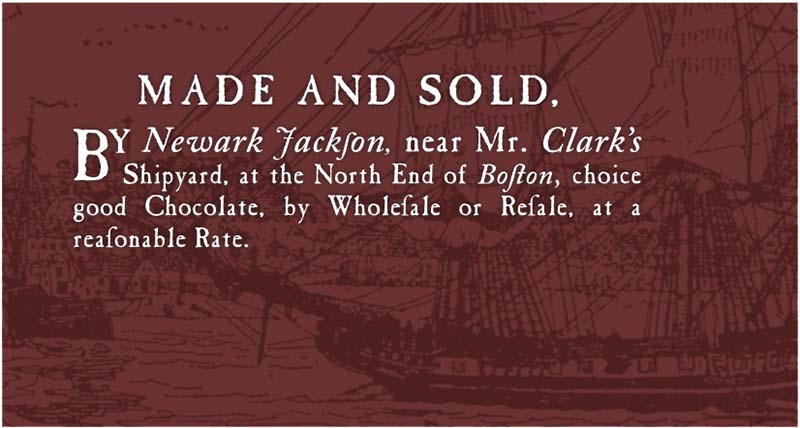The People in the Pews: Capt. Newark Jackson
The number of mariners among the early pew owners of Old North provides an indication of the importance of sea trade as well as its potential for generating wealth in pre-Revolutionary Boston. One such man was Captain Newark Jackson, who owned Pew #13 from 1738 until 1743.
The historical record reveals a man who engaged in a variety of business activities in his relatively short life, seeking to achieve financial success for himself and his family (wife Amey and children Elizabeth, Newark Jr., and Amey). Newark Jackson’s story embodies the complex and sometimes corrupt nature of colonial trade: he was a sea captain and a smuggler, merchant and shop owner, churchgoer and slave trader.

Jackson plied Triangle Trade routes within and from the tropics to New England, transporting not only goods such as textiles and cacao, but also trafficking human beings alongside those goods. Jackson’s connection to slavery extended beyond transportation of enslaved Africans as he was himself a slave owner and trader. Much of Jackson’s non-human cargo would have been considered to be smuggled goods under the laws of the time, which attempted to restrict the flow of goods in order to maximize revenue for the various imperial powers that controlled areas along the trade routes. Jackson was, in fact, a minor player in large smuggling and slave-trading ring involving at least four other men who had connections to Old North, either as donors or as pew owners. Ongoing research will endeavor to tease out more about these men and their relationship to one another and to Old North.

Jackson was also a merchant who had a chocolate mill in the North End. He was actually one of several members of Old North’s early members who were chocolatiers. During the colonial era, chocolate was a popular beverage, prepared from imported cacao and spices. At chocolate mills, such as Jackson’s, the cacao beans were ground and blended with spices from all over the world, and sold to consumers in hardened cake-like blocks (similar in texture to baking chocolate nowadays) for home preparation. It is likely that two of the enslaved men owned by Jackson, whose names were Boston and Warham, worked in this mill. (Siller, an enslaved woman, most likely worked in Jackson’s home.)

Jackson’s life ended violently and abruptly in 1743 when he was murdered during a mutiny aboard the Rising Sun, a schooner tied to the smuggling ring. Examination of the cargo lists revealed that Jackson was transporting thirteen enslaved children and two enslaved men on his final voyage. We do not know what happened to these people.
After Jackson’s death, Amey Jackson is listed as the owner of Pew #13. Newark Jackson did not die a successful man, and Amey Jackson, left with three children, did not inherit much. Church records indicate that in December of 1769, Pew #13, “lately belonging to Mrs. Amy [sic] Jackson” was “forfeited”, due to her “deficiant [sic] Contribution to this church.” Having fallen behind in her payments for some time, her pew was to be resold to another congregant. The story of Newark Jackson may not be the story it initially seemed to be, but it demonstrates the ways that research can deepen and broaden our understanding of the past, change our perceptions, and lead to more questions.
